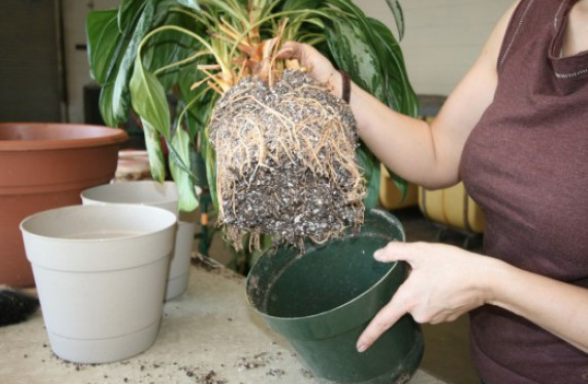On cold winter days, houseplants can help raise our spirits. In addition to being beautiful, research has shown that they help clean
addition to being beautiful, research has shown that they help clean
indoor air, and have therapeutic effects on people of all ages. They
also help satisfy the urge for those people that can’t wait for nextspring to begin! To keep your houseplants healthy, there are a few
different things to consider; light, temperature, water, humidity, and
nutrient requirements.
Light will be the most limiting factor to indoor growth, cloudy days,
few hours of daylight, and the low angle of the sun all play a role in
this. Place plants in south facing windows to maximize light levels.
Simple fluorescent bulbs also can be beneficial, providing extra hours
of light in the evening.
Temperature is another consideration when it comes to houseplants. Most plants prefer it to be between 65
and 75 degree F, with night temperatures about 10 degrees cooler. Keep plants away from cold drafts, such as
doors and windows. Also avoid hot and dry areas such as heat vents.
Don’t water on a schedule, only when your plant needs it. Dig your finger into the soil to the second knuckle, if
it feels dry, it is time to water. Water thoroughly until water comes out of the drain holes on the bottom. Do
not allow plant to sit in a saucer full of water.
During the season of indoor heating, homes often become quite dry. Grouping plants together, and using a
room humidifier can raise humidity. This prevents moisture loss, and prevents you from watering more often.
During the winter when light levels are lowered, plants are limited in their growth. Be careful not to over
fertilize your houseplants during the winter in an attempt to encourage growth. Always mix fertilizers at ½ the
recommended rate on the label. This will prevent burn and salt accumulation in your container.
Succulent Success
Succulent gardens are currently trending as one of the most popular forms of indoor gardening. Why is this?
With their thick stems and fleshy leaves, they are able to tolerate the low humidity climates of homes and
offices with grace. They also have strong leaf shapes and eye catching foliage! To start a succulent garden, you
only need a few items, some sunshine, and a sense of creativity. Here are a few basics to get you started on
your path to succulent success!
Succulents like to stay drier than most other houseplants, they can get root rot easily, so be sure not to
overwater them. Over watering is the most common cause of failure with succulents. When planting, many
people put pebbles or pea gravel in the bottom of the pot, this will help increase the drainage. It is also
recommended that you use a high porosity soil. There are several potting mixes that are specifically
designated for growing succulents.
Sunshine is essential for succulent success, they crave the brightest light possible, especially in our northern
climate. Place plants near a south or east facing window. During the warmer parts of the year, you can move
your garden outside, choose a sheltered area that still allows sunlight to shine down on them!
You may want to fertilize your succulent garden, but be careful! Succulents can usually only tolerate about half
the fertilizer rate that standard houseplants can, so use a fertilizer that is intended for succulents, to prevent
them from burn. Succulents grow the most during the spring and summer, it then slows in fall and winter is
generally a time of rest. During the growing seasons, succulents can be fertilized 3-4 times, then little to not at
all during the winter.
With endless types of succulents to choose from, it may be difficult to choose! Echeveria is known for its’
rosette forming leaves and many colors. Aloe can make a great accent with its intensely green coloring and
strong lines. Sempervivum (“Hen and Chicken”) spread easily and have tightly packed leaves, making it a great
selection. Kalanchoe comes in a variety of colors and shapes, making it versatile to tuck into any garden.
Choose one, or a few, to make a stunning impact of color and style in any space!



